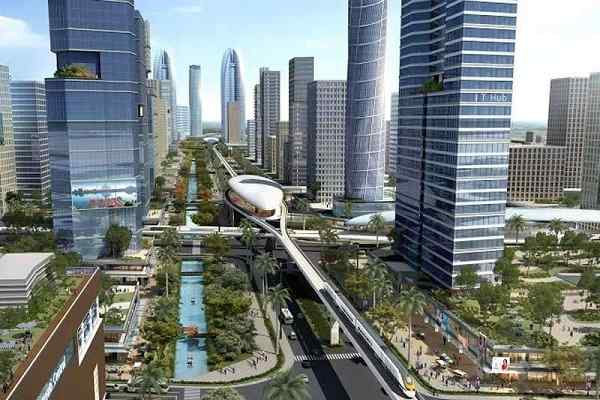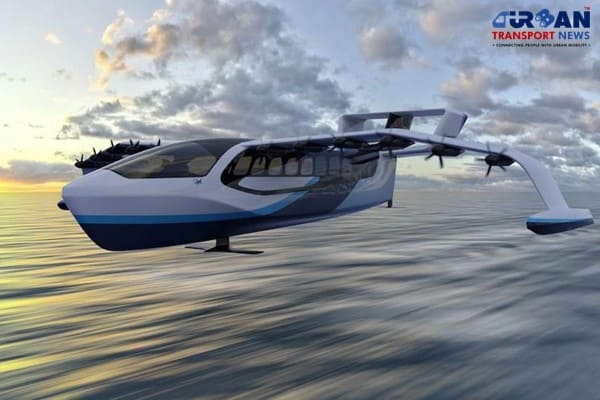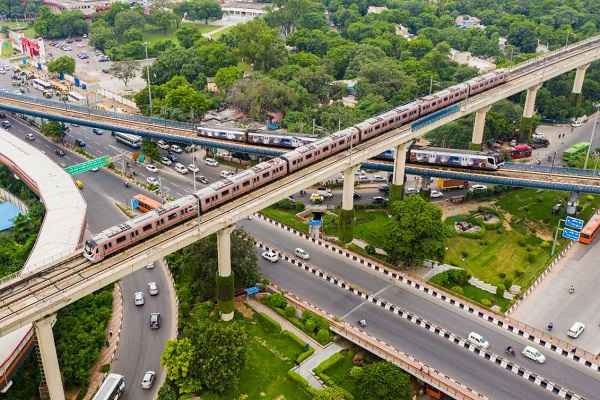 Delhi unveils ambitious Urban Mobility Vision: Luxury Metro Coaches, New Tunnels and Pod Taxi
Delhi unveils ambitious Urban Mobility Vision: Luxury Metro Coaches, New Tunnels and Pod Taxi Qatar approves Saudi Rail Link Agreement, Accelerating Gulf Railway Vision 2030
Qatar approves Saudi Rail Link Agreement, Accelerating Gulf Railway Vision 2030 UP Govt plans to introduce Water Metro services in Ayodhya, Varanasi & Prayagraj
UP Govt plans to introduce Water Metro services in Ayodhya, Varanasi & Prayagraj India’s First Urban Ropeway begins Trial Run in Varanasi, Set to carry 1 Lakh passengers daily
India’s First Urban Ropeway begins Trial Run in Varanasi, Set to carry 1 Lakh passengers daily India and Bhutan to Build First-Ever Rail Link: ₹4,033 Cr Project to Boost Regional Connectivity
India and Bhutan to Build First-Ever Rail Link: ₹4,033 Cr Project to Boost Regional Connectivity Patna to launch Eco-Friendly Water Metro; Trial Run soon between Digha and Kangan Ghats
Patna to launch Eco-Friendly Water Metro; Trial Run soon between Digha and Kangan Ghats Air India Group set to launch Flights Operations from Navi Mumbai International Airport
Air India Group set to launch Flights Operations from Navi Mumbai International Airport Chennai to launch 25-Year Mobility Plan with Unified QR Ticketing and One-App Transit System
Chennai to launch 25-Year Mobility Plan with Unified QR Ticketing and One-App Transit System Kochi Metro bags ₹4.4 crore contract to prepare DPR for Mumbai Water Metro Proejct
Kochi Metro bags ₹4.4 crore contract to prepare DPR for Mumbai Water Metro Proejct Navi Mumbai International Airport set for September launch; IndiGo and Akasa Air to lead Operations
Navi Mumbai International Airport set for September launch; IndiGo and Akasa Air to lead Operations
Latest innovations in urban mobility sectors

Urban mobility refers to the movement of people and goods within urban areas. It encompasses the various modes of transportation, infrastructure, and systems that enable individuals to travel within cities. Urban mobility is a critical aspect of urban planning and development as it affects factors such as traffic congestion, air quality, accessibility, and overall quality of life in cities.
Traditionally, urban mobility has relied heavily on private cars and public transportation systems like buses and trains. However, with the rapid growth of cities and increasing concerns about environmental sustainability, there has been a shift towards more sustainable and efficient mobility solutions.
In recent years, there have been several significant innovations in the urban mobility sector. Here are some notable examples:
1. Electric Vehicles (EVs): The adoption of electric vehicles has gained significant momentum. Advances in battery technology have led to the development of more efficient and affordable electric cars, buses, and scooters. Many cities are incentivizing the use of EVs by building charging infrastructure and providing subsidies.
2. Shared Mobility Services: Shared mobility services such as ride-hailing, bike-sharing, and scooter-sharing have transformed urban transportation. Companies like Uber, Lyft, and Lime have introduced app-based platforms that allow users to access transportation on-demand, reducing the need for private car ownership.
3. Micro-Mobility Solutions: The rise of micro-mobility solutions, particularly electric scooters and bicycles, has offered convenient and eco-friendly alternatives for short-distance travel. These dockless vehicles can be rented through smartphone apps and have become popular in many cities worldwide.
4. Autonomous Vehicles (AVs): The development of autonomous vehicles has the potential to revolutionize urban mobility. Companies like Waymo, Tesla, and Cruise are making significant progress in self-driving technology. AVs have the potential to improve road safety, reduce congestion, and enhance transportation accessibility.
5. Mobility as a Service (MaaS): MaaS is an emerging concept that integrates various modes of transportation into a single platform. It allows users to plan, book, and pay for different transportation options seamlessly. MaaS aims to provide a more efficient and sustainable urban mobility experience.
6. Bike Infrastructure and Bike-Sharing Programs: Many cities are investing in dedicated bike lanes, bike-sharing programs, and bike-friendly infrastructure to encourage cycling as a mode of transportation. These initiatives promote active mobility, reduce traffic congestion, and contribute to a cleaner environment.
7. Smart Traffic Management Systems: Advanced technologies, including artificial intelligence and data analytics, are being employed to optimize traffic flow and improve transportation efficiency. Smart traffic management systems can dynamically adjust traffic signals, monitor congestion, and provide real-time information to drivers, resulting in smoother and safer urban mobility.
8. Flying Taxis and Urban Air Mobility: The concept of flying taxis and urban air mobility is gaining attention. Several companies are developing electric vertical takeoff and landing (eVTOL) aircraft capable of transporting passengers within cities. These futuristic vehicles have the potential to alleviate ground congestion and reduce travel times.
These innovations are continuously evolving, and ongoing research and development efforts aim to further enhance urban mobility, making it more sustainable, efficient, and accessible for all.







